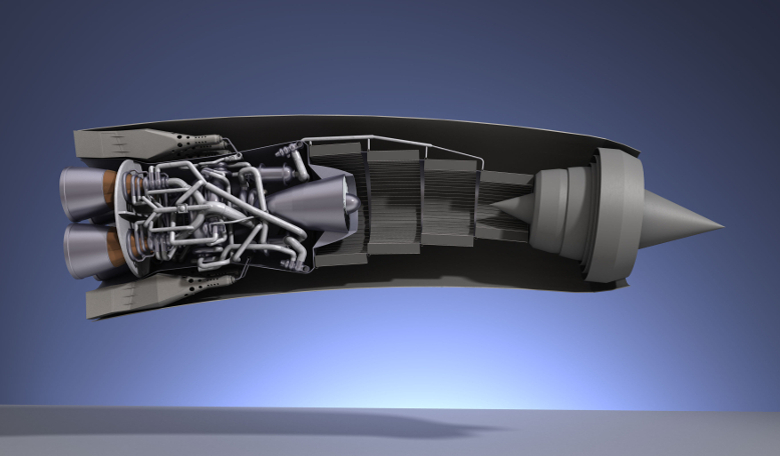Yesterday, Reaction Engines Ltd, a UK based company founded in 1989 by Alan Bond, announced the signing of a €10m European Space Agency (ESA) contract, on top of a deal already secured with the UK Space Agency to help develop SABRE™, a highly scalable, innovative, new class of engine that is a leading contender for the next generation of hypersonic flight and space access vehicles.
SABRE, which stands for Synergetic Air-Breathing Rocket Engine, is a breakthrough in aerospace engine technology and is the concept of former Rolls-Royce engineer Mr Bond and two business partners who started the project over 30 years ago. The difference with the SABRE engine compared to conventional rocket engines is its ability to ‘breathe’ air from the atmosphere. Rather than using a weighty on-board oxidiser such as liquid oxygen normally used by conventional rocket engines, SABRE uses oxygen already present in the atmosphere in the combustion process. This is more akin to how jet engines work and an aircraft powered with a SABRE engine would be able to provide thrust from a standstill position on the runway to speeds above five times the speed of sound in the atmosphere.
The advantage with SABRE however, is that in a reconfigured form it allows space flight at up to orbital velocity (equivalent to twenty five times the speed of sound) and therefore it is also suitable for powering modified aircraft directly into Earth’s orbit.
The agreement signed yesterday adds to a £50 million grant funding directly acquired through the UK Space Agency, that was agreed in late December 2015. It is also in addition to a £20.6 million investment from BAE systems in November 2015, to acquire 20 per cent of its share capital with agreement to provide industrial, technology development and project management expertise to support Reaction Engines during its development phase. It is hoped that with all of the agreements now in place that Reaction Engines will deliver the world’s first SABRE ground demonstrator engine by the end of the decade.
Speaking about the announcement, Mark Thomas, Chief Executive Officer of Reaction Engines Ltd, said “we’ve had valuable support from ESA and UKSA to date, and today’s agreement is a further vote of confidence not only in the revolutionary potential of this technology, but our ability to deliver on it. We are now entering an exciting phase where we can accelerate the pace of development to get SABRE up and running.”
Meanwhile, the UK Space agency also announced yesterday that is is investing £4.12m in a National Propulsion Test Facility, giving the UK a new facility for space technology testing.
The planned facility will be based at Westcott in Buckinghamshire and it will allow UK companies and academia to test and develop space propulsion engines including engines geared towards interplanetary travel, along with building on existing facilities for the significant commercial telecommunications satellite market.
Katherine Courtney, Interim CEO of the UK Space Agency said yesterday, “our investment in a National Space Propulsion Facility will add several new capabilities to the UK space sector and build upon what is already a world-class UK space propulsion sector…We hope that UK companies will continue to make successful contributions to international missions, such as the LEROS 1b engine involved in JUNO.”
It is expected that Reaction Engines Ltd will make their home there while they test their advanced rocket nozzle technology for the SABRE engine.











